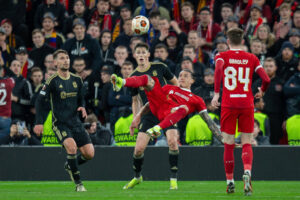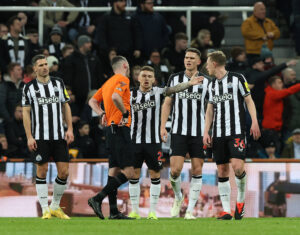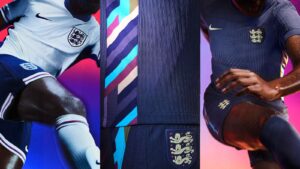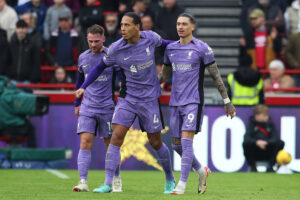As the clock ticked down on a warm night in Madrid, and the referee put mouth to whistle, cries from the red side of the stadium arose. Liverpool had won their sixth Champions League title.
The Merseyside faithful joined together in song; You’ll Never Walk Alone they bellowed. But just how did this song become the anthem of Anfield? And which other tunes have such an influence in football nowadays?
Song in Football: How You’ll Never Walk Alone and Others Came to Be
You’ll Never Walk Alone
Despite reaching its football fame via the Liverpudlian band Gerry and the Pacemakers, the song originally appeared in the 1945 musical, ‘Carousel’. It is sung to cheer up the protagonist, Julie, after her husband, Billy’s unfortunate death. Billy returns in ghost form to sing it and motivate his unhappy daughter, Louise, at her graduation in the final scene. The song’s ties with Liverpool, however, came 19 years later.
Its most successful cover came in 1963, when Gerry and the Pacemakers released their version, becoming the UK number one for four consecutive weeks. After the success of the Liverpool-born Beatles, ‘Merseybeat’ was in full swing. The Pacemakers followed suit, and soon Anfield faithful began singing it before every match.
It even subsequently featured on their club badge. Lead-singer Gerry Marsden was said to have presented the song to then-manager Bill Shankly in 1963 pre-season. Shankly told him ‘Gerry my son, I have given you a football team and you have given us a song’. Shankly chose the song on his desert island disks ahead of the 1965 FA Cup final, cementing it in Liverpool folklore.
More Recent Significance
YNWA garnered more interest following the Hillsborough disaster in 1989. The lyrics were recited, and then sung in the memorial service for the victims of the disaster, and have since become a sign of solidarity.
Other clubs across Europe have also picked up the song, with Celtic singing it before their European ties. This is due to their meeting with Liverpool in the Cup-Winner’s Cup semi-final in 1966. The song’s influence has even stretched to the Netherlands, with FC Twente singing it at their home games. This is because George Sephton, the former stadium-speaker at Anfield, officially gave it to them at the last match at their Diekman stadium.
Liverpool went on to meet Borussia Dortmund in the final of the 1966 Cup-Winner’s Cup, in none other than Glasgow. However, it was a growing relationship and numerous meetings with Celtic that caused the song’s popularity in Germany. In 2016, supporters of Dortmund and Mainz sang the song commemorating a fan who died of cardiac arrest in the stands during the game.
It was in their 2016 Europa League semi-final with the Reds that all four sides of the Westfalenstadion united in song. Finally, the two sides sang the tune together. It has since become arguably the most popular song in World football.
Forever Blowing Bubbles
West Ham United fans are treated to a bubble show along with their team’s anthem, not an experience every football fan can boast about. The story behind this song is just as unique as its lyrics. The song originated in America in 1918, in the Broadway musical The Passing Show of 1918.
Billy Murray, former Hammers player, who played for his local Park School, had an uncanny resemblance to a character in Millais’ painting in a 19th century Peers Soap advert. So, whenever Murray and Park School played well, their headmaster would sing the song. He knew former West Ham manager Charlie Paynter well and presumably sung it to him at Murray’s trial with the club.
Paynter took the song with him and now it has grown into much more. As such, the tune has a story very unique to West Ham and doesn’t tend to feature at any other ground. Though, other sides have sung the song in celebration thanking the London side; Blackburn Rovers players sang it in the dressing room after the Hammers’ help them to their 1995 Premier League title.
In 2006, Arsenal fans had their own rendition when West Ham’s victory over Tottenham Hotspur secured their Champion’s League place. The hope remains that West Ham will ‘fly so high’ like the bubbles in their tune.
Three Lions on the Shirt
You couldn’t talk about English football songs without mentioning the legendary Three Lions by Baddiel, Skinner and the Lightning Seeds. Written in 1996 to commemorate England hosting the European Championship, it opens not optimistically, but pessimistically about the team’s hopes.
The opening features criticisms from pundits Alan Hansen, Jimmy Hill and Trevor Brooking. Still, the song expresses optimism for the future, ‘Thirty years of hurt/ never stopped me dreaming’.
The song references many iconic scenes from England’s successes in previous World Cups; ‘Nobby dancing’ refers to Nobby Stiles’ victory jig after winning the 1966 World Cup. ‘Bobby belting the ball’ evokes the memory of Charlton’s long-range strike against Mexico en route to the 1966 final.
Funnily enough, that particular line was excluded from the original version. Instead, ‘Butcher ready for war’, was meant to feature, as an ode to Terry Butcher’s combative performances. However, the FA requested this be removed, to prevent encouragement of hooliganism.
The World Cup last year demonstrated this song’s importance to English football culture. The refrain ‘It’s coming home’ was heard on the streets of every city during the tournament. That very phrase became every England fan’s mantra. It was even the UK number one following England’s run to the semi-finals.
It was the Britpop phenomenon and the Lightning Seeds (stars of the movement) that drove the song’s success in 1996. But, now the song has become such a crucial part of football culture that it resurfaces every two years.
These are just a few of the tunes that unite fans from all corners of the United Kingdom, and even beyond. Song has and always will remain a demonstration of solidarity that makes the game evermore beautiful.
Main Photo
Embed from Getty Images






